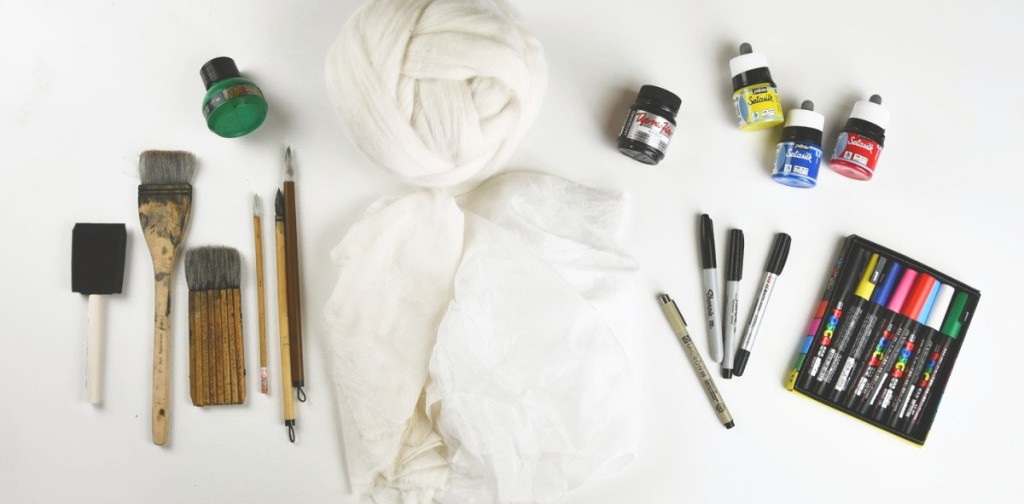
Ink on Cloth Online Workshop: Materials List
If you have any questions about any of the materials listed, please do email me!
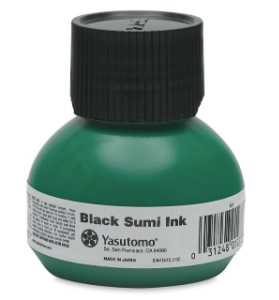
Sumi-e ink : 60ml (2 ounce).
Yasutomo brand or Kuretake Zig Sumi Ink or Black Ink.
All three are excellent for use on cloth- choose any one of these- whichever is easiest for you to get.
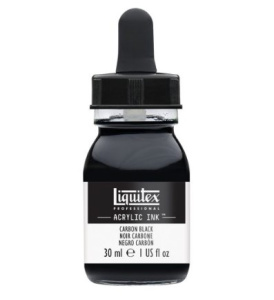
Acrylic Ink: 30ml (1 ounce). Two good brands that are very readily available in most countries are Liquitex and Daler Rowney FW Artists Ink.
- Colours: 1 black and 1 of a colour you most like to use as an embellishment colour. Or, if you already know you enjoy mixing colours, you could invest in the black, plus one each of turquoise, yellow and red or magenta (with this set you can mix any colour, as we’ll be doing with the fabric paints.) Liquitex has a packaged set of the three primaries that you may be able to find in your local art supply store.
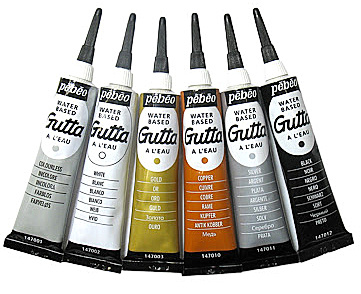
Gutta: Pebeo Water Based Gutta. 20 ml (0.7 ounce) tubes
- Colours: black and/or copper
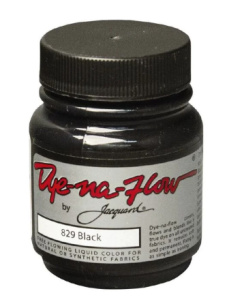
Jaquard Dye-Na-Flow Fabric Paint: 66ml (2.25 ounces), Black
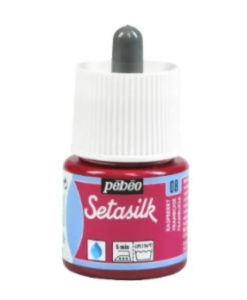
Pebeo SetaSilk: 45ml (1.5 ounces), Primary Colours: 1 each of Primary Yellow, Magenta, Cyan Blue.
Note: In Australia- you can also use Texcraft Fabric Paint from Kraftkolour, 130ml, in mid-yellow, magenta or pillar box red, and mid-blue or turquoise
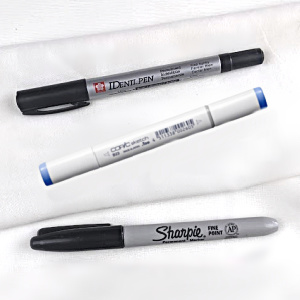
Permanent alcohol-based marker. Try one or several of these:
- Sharpies: medium point (standard Sharpie)
- Sakura Identipen
- Tombow ABT Pro, Copic, or Ohuhu- all dual-tipped, alcohol based colours. Try one colour in one of these, as a trial before you commit to a set.
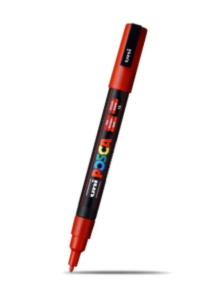
Paint Markers: Uni Posca PC-3M Paint Marker Fine Bullet Tip
- Colour: 1 marker in a colour you most like to use as an embellishment colour. Or get a set of 8 for a variety in colours. I don’t want you to invest in something you might not use much, so just having one marker to experiment with, is great for our class.
Brushes:
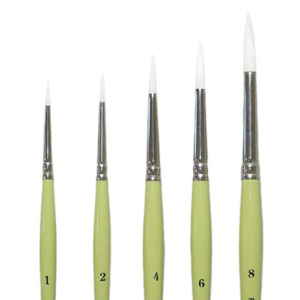
- one or two small, fine round paint brushes
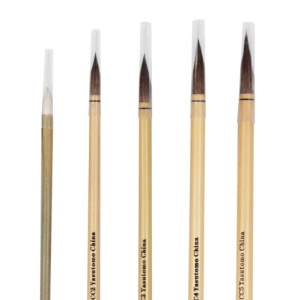
- calligraphy brushes: one or two of these, in two different tip sizes
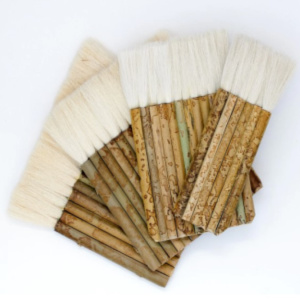
- Chinese wash brushes: these are excellent for big brush lines: I like the 6 and the 8 stem brushes
- Hake brushes also work well for larger lines and marks
- Both of these brushes can be found in art supply stores, ceramic supply stores, or some specialty cookware shops
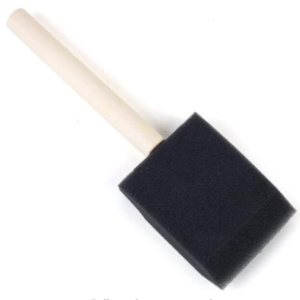
Foam brush: a 2″ (5cm) foam brush is ideal, but brushes in other sizes are good also
10-20 sheets sketch paper. Aim for A3 or bigger, and about 110gsm. Any paper you have on hand will be fine, including printer paper. But a larger and slightly heavier paper would be great to have. This is for doing practice mark making, in different styles, with different inks and tools.
4.0 metres (4.5 yards) Silk Habotai/Paj/Ponge 5 momme weight, white.
3.0 metres (3.25 yards) Cotton Voile/Batiste, lightweight, white or natural.
For steaming: 1.0 metre (1 yard) cotton muslin (may be called calico in UK/Australia/NZ) OR Newspaper or larger sheets of newsprint (10 pages).
300grams (10.5 ounces) merino wool, 19-21 microns, white or natural
60 grams (2.25 ounces) merino wool, 19-21 microns, charcoal grey
Bubblewrap: 2 pieces between 45-60cm (18″-24″) square
Old towel
Bowl or Basin for water
Ball brause or other tool for wetting out
Soap (I use a natural dish soap or natural liquid dish detergent but whatever soap you prefer will work well)
Old rags or Paper towels- have 2 or 3 on hand
Steamer: A single tier is fine. A bamboo steamer, or even a folding vegetable steamer will work. You can even use a sieve over a pot of boiling water with the pot lid holding in the steam
Cooking pot: This does not have to be a dedicated dye pot
